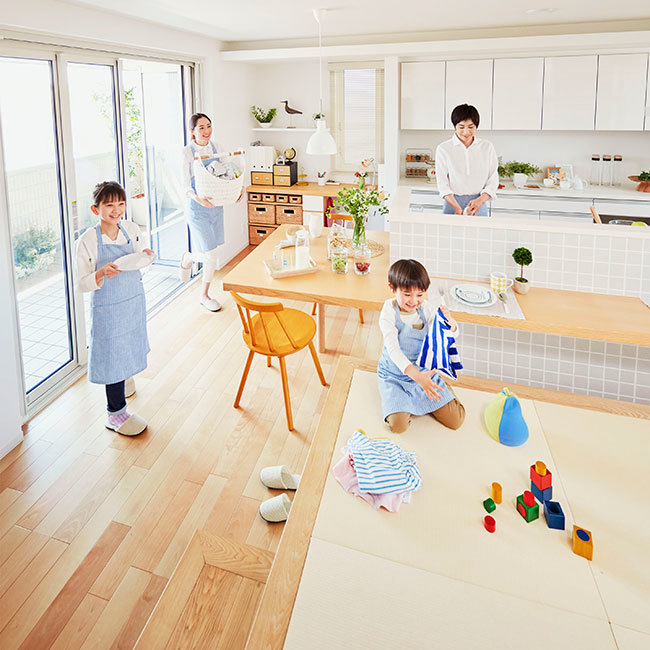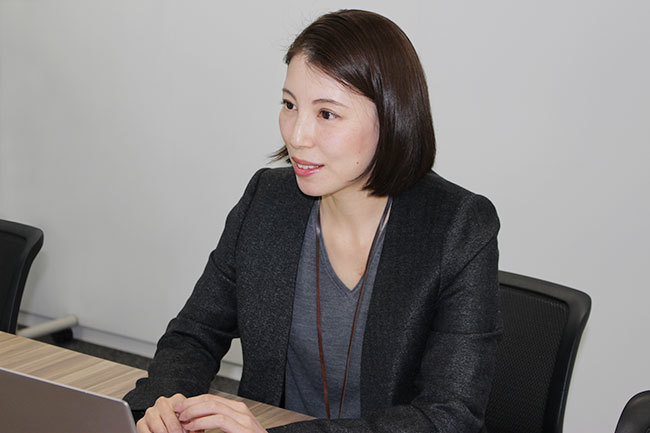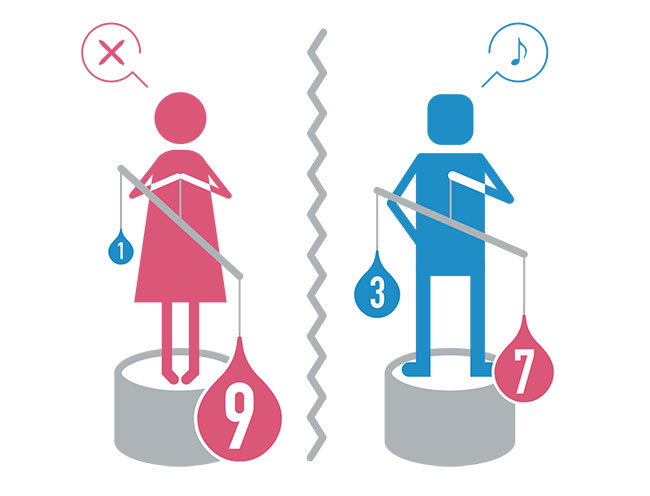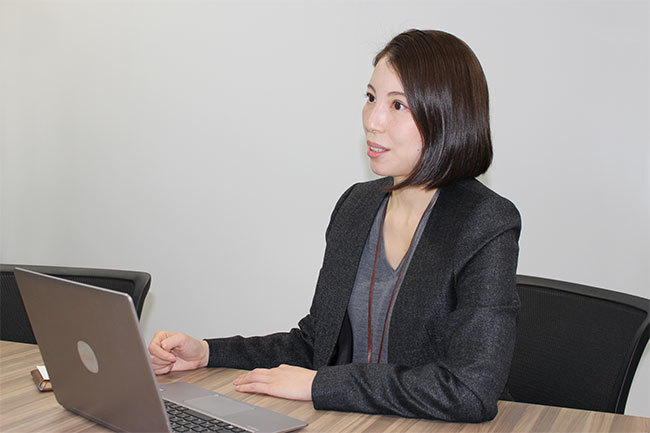Note: This website was automatically translated, so some terms or nuances may not be completely accurate.
We want to create a new culture of housework. The producer's vision behind popularizing "nameless chores"

When we think of typical "household chores," tasks like "cooking," "laundry," and "cleaning" come to mind. However, there also exist "nameless chores" like "putting away clothes left lying around," "throwing away unwanted flyers," and "tidying up shoes scattered at the entrance." And isn't it often the case that, without anyone realizing it, "someone" ends up handling most of these?
Focusing on these small, unnamed chores that creep into our lives, Daiwa House Industry's "Housework Share House" was designed around the concept of "housework sharing" among the entire family. Aki Mitoma of Dentsu Inc. (Business Transformation Division) was involved in the communication for this project.
What exactly did she accomplish in this project, which received significant recognition, including winning the top prize in the Communication Research category at the Golden World Awards for Excellence hosted by the International Public Relations Association? We delve into Ms. Mitoma's production techniques while reflecting on the project.
The goal was to "create culture" more than just "sell"
──The Housework Share House emerged as a solution to the problem of "nameless housework" becoming concentrated on one person. How did this idea originate?
It started with an idea from female contract employees (at the time) working at Daiwa House's Toyama branch. The company had an internal system where employees could propose ideas for homes, and it seems this idea emerged during discussions among several female employees.
While typical household chores like "cooking," "laundry," and "cleaning" are shared among family members, the fundamental realization was: "Housework isn't just those things, right?" Things like turning socks right side out and putting them in the laundry basket, or tidying up scattered shoes. These "unnamed chores" are numerous, and since they're essentially "tasks that bring things back to zero," it's hard for others to appreciate how much work they are. And often, it's the homemakers who take on these tasks. They wondered if the design of the house itself could be adapted to solve this problem.
──What part of this project did you handle, Mr. Mitoma?

My involvement focused on the communication strategy for the public. The ideas from our female employees took shape, eventually giving birth to the "Housework Share House." When it launched nationwide in 2017, we were consulted on how to communicate and spread the concept to the public.
Typically, communication and PR focus on promoting product names and features. This time, however, our goal was to raise awareness of "unnamed household chores," change household habits, and create a new culture around housework.
The first step I take with clients is aligning our perspective on "where we want to go." For the Housework Share House, the voices calling for "changing housework habits" and "creating a new culture around housework" were stronger than simply communicating the product. Amidst the rise of dual-income households, there was a desire to change individual household habits. Therefore, I proposed ideas and plans centered on communicating the challenges of housework and the new culture, rather than just the product.
We aimed to solve challenges not only for society but also for the companies providing the products themselves.
──How did you actually communicate this?
First, to grasp the core issues, we spoke with female employees at the Toyama branch. Based on that, we prepared several mechanisms to make people aware of the existence of "nameless chores." We created visual case studies and tools like the "Housework Annual Income Simulator," which converts "nameless housework" into monetary value and expresses housework as an annual income. To heighten awareness of societal issues, we also conducted a survey ("Survey on Housework Awareness Among Dual-Income Couples Aged 20s to 40s," 2017).
The survey results were revealing: when dual-income couples were asked to estimate their respective shares of household chores, wives most commonly reported "Husband 10%, Wife 90%," while husbands' top response was "Husband 30%, Wife 70%." This means husbands perceive themselves as contributing more to household chores than their wives believe. Focusing on this gap in perception, we began communicating the idea that "nameless chores" might actually lie beneath this disparity.

However, since housework is a habit, continuous behavioral change is essential. Therefore, we consistently publish national rankings of "housework sharing ability" by prefecture and hold ongoing events related to sharing household chores. We aim to create opportunities that bridge awareness to behavioral change.
While these efforts are directed toward solving societal challenges, I personally strive to ensure the project addresses not only societal issues but also the specific challenges of the company itself. In this case, I focused on making the initiatives around the Housework Share House and unnamed household chores a significant positive for Daiwa House and its employees.
──What specific actions did you take?
To reiterate, the household chores sharing house originated from an idea by female contract employees at the Toyama branch. This idea could only emerge because Daiwa House has established a Diversity Promotion Office within its HR department and maintains systems to gather ideas from all employees. This project has become a symbolic example of such corporate initiatives.
First, by properly highlighting this context, we aimed to show employees the company's image and the direction it aspires to take.
We also conducted the aforementioned awareness survey among Daiwa House's female employees, receiving responses from over 1,000 individuals. The results revealed challenges for the company in promoting women's advancement and addressing diversity issues.
In other words, we positioned this initiative not only to solve societal issues like household chores and dual-income households, but also to play a role in the company's own HR policies and fundamental stance.
How to broaden our perspective from our immediate reality to encompass society and the company
──What was the reason for focusing on "both" society and the company?
As a producer, it's crucial to maintain an overview. When you set a goal, it's easy to get overly focused on achieving it. That's precisely why I make a point to view things from both societal and corporate perspectives. Having multiple viewpoints helps foster that broader perspective.
This project specifically aims to change household habits and create a new culture. Achieving that is difficult with a one-off project; it requires a sustainable system. If the project also brings significant value to the company itself, it becomes easier to maintain. That's another reason.
In that sense, I was really pleased we could advance this project while thinking together with our clients about its significance within the company.
──What aspects did you focus on particularly in this project?
As I mentioned earlier, it's probably that we deliberately didn't push the products or features of the household chores share house to the forefront. Instead, we focused entirely on appealing to the concept of "nameless chores" and the challenges faced by dual-income households.
Additionally, as one element of our public messaging, I had considered including concrete tips or how-to content like "ways to share household chores." However, during discussions with the clients, we agreed that "the reality of chore-sharing, the state of 'nameless chores,' and the goals each household aims for will inevitably differ." This made me feel that presenting a single model solution with a "do it this way" approach would miss the essence. It was valuable that we could discuss and think through these points together.
My ideal approach is to first understand the essence of an issue or project by applying it to my own life. Then, I broaden that perspective to society while considering solutions. Simultaneously, I expand my view to include the benefits for the company sharing the message. This allows me to grasp the core while maintaining an overview.
I believe this case exemplified putting that approach into practice. As a dual-income couple myself, I think I was able to start from that relatable perspective and broaden my view to encompass society and the company.
That said, I believe that beyond communication—Dentsu Inc.'s core strength—other approaches may sometimes be necessary for solving problems. Moving forward, while communication remains our starting point, I want to broaden our scope to include other solutions. For example, I aim to find ways to solve consumer and societal challenges by partnering with clients to drive innovation, whether through product development or new business ventures. I want to work alongside clients to identify the best solutions that truly capture the essence of the problem.

Was this article helpful?
Newsletter registration is here
We select and publish important news every day
For inquiries about this article
Author

Aki Mitoma
Dentsu Inc.
Business Transformation Division
Transformation Producer
After gaining experience in sales for marketing communications—including media, creative, and promotion—I transitioned to my current role as a business producer, aiming to become a business partner for companies.
